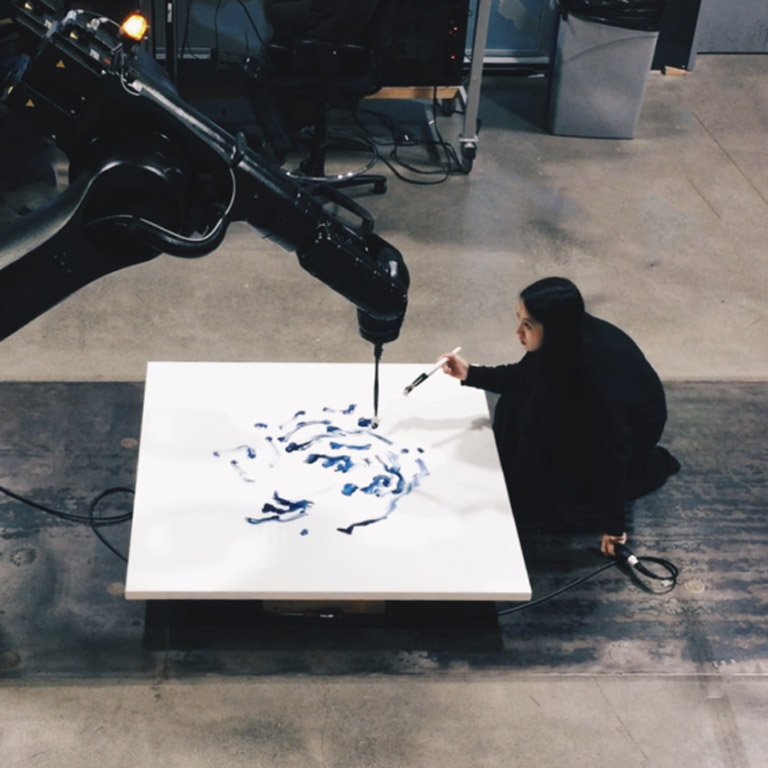Source: Artnet News
Sougwen Chung
WHO: Chung is a Canadian-born, Chinese-raised, New York-based interdisciplinary artist and former research fellow at MIT’s Media Lab. She’s currently E.A.T.’s artist-in-residence in partnership with the New Museum and Bell Labs. Her work, which spans installation, sculpture, drawing, and performance, explores mark-making by both hand and machine in order to better understand the interactions between humans and computers. She has exhibited at institutions including The Drawing Center in New York and the National Art Center in Tokyo.
WHAT: For her current project, Drawing Operations, Chung uses Google’s TensorFlow, an open-source software library used for machine learning, to classify archives of her own drawings. The software then transfers what it has learned about Chung’s style and approach to a robotic arm that draws alongside her. She’s also working on a few new projects using pix2pix (a neural network trained to produce variations on an image, like the nighttime version of a daytime photo) and sketch-rnn (which tries to continue or complete a digital sketch based on where the human leaves off) to expand on this idea of human and machine collaboration.
WHY: “As an artist working with these tools, the promise of AI offers a new way of seeing,” Chung explains. “Seeing as self reflection, seeing through the ground truth of ones own artworks as data. There is a lot of talk about biases evident in AI systems and that is absolutely true within AI systems trained on art. You could describe visual language as a kind of visual bias, a foregrounding of the subjective view of the artist. By translating that into machine behavior, I am attempting to create a shared intersubjectivity between human and machine.”


